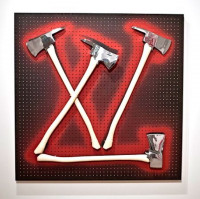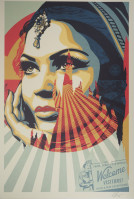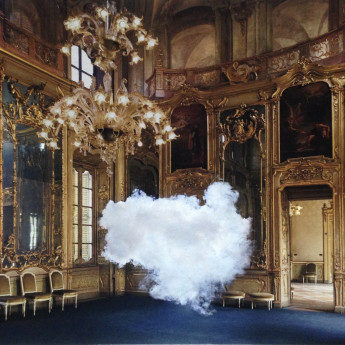
Details
Artist
Styles
Liquitex on metal // Zevs’s CCCP - Liquidated Hammer and Sickle presents a powerful reinterpretation of the iconic Soviet symbol, using his signature “liquidation” style to transform the hammer and sickle into a dripping, deconstructed image. Rendered in vibrant yellow against a bold red background, the once-solid symbol appears to melt, with liquefied drips running down, suggesting decay or dissolution. This mixed media piece, created with Liquitex on metal, carries strong political and historical connotations, challenging viewers to consider the legacy and transformation of ideologies over time. Zevs, known for his street art background and provocative approach, uses this piece to question permanence, identity, and the power of symbols in a rapidly changing world.
CCCP - Liquidated Hammer and Sickle
form
Medium
Size
145 x 70 cm
- Inches
- Centimeters
Edition
Price
- USD
- EUR
- GBP
Details
Artist
Styles
Liquitex on metal // Zevs’s CCCP - Liquidated Hammer and Sickle presents a powerful reinterpretation of the iconic Soviet symbol, using his signature “liquidation” style to transform the hammer and sickle into a dripping, deconstructed image. Rendered in vibrant yellow against a bold red background, the once-solid symbol appears to melt, with liquefied drips running down, suggesting decay or dissolution. This mixed media piece, created with Liquitex on metal, carries strong political and historical connotations, challenging viewers to consider the legacy and transformation of ideologies over time. Zevs, known for his street art background and provocative approach, uses this piece to question permanence, identity, and the power of symbols in a rapidly changing world.
What is graffiti art?
Graffiti art refers to drawings and writings that are painted, scratched, or scribbled on walls or other surfaces, typically in public spaces. This art form ranges from small tags to elaborate wall paintings. Graffiti has been in existence since ancient times, with examples dating back to the Roman Empire, Ancient Greece, and Ancient Egypt.












